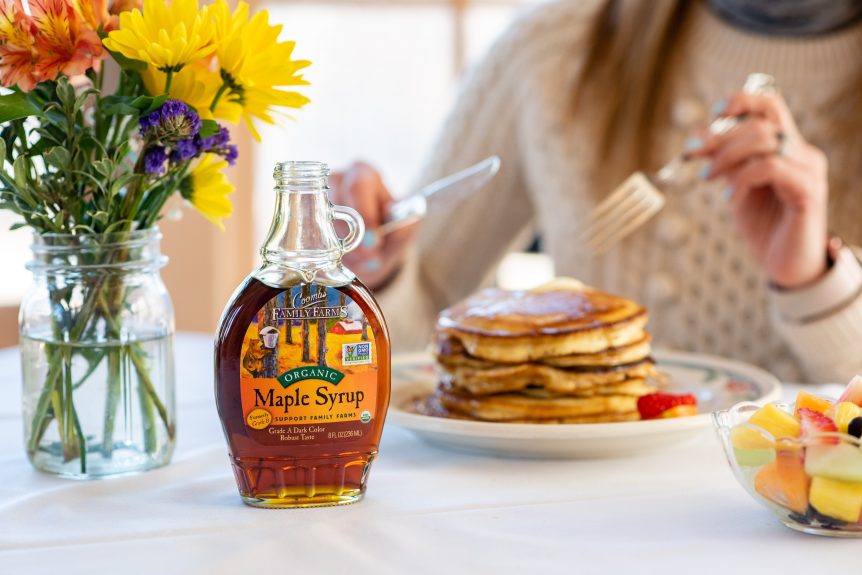
I love knowing the story behind food. That’s why I go on so many trips to see how our produce, nuts, dairy and other food items are made. Recently, I had the pleasure of learning how an iconic American food is created when I visited the heart of Vermont’s maple country.
Simple Origins
Most people, myself included, understand that maple syrup (the real stuff, not the kind made from corn syrup) is made from maple trees, but just how that sweet, amber syrup gets from the tree to the bottle may be a little murky. I learned that it’s a pretty simple process, but not necessarily an easy one.
I was invited by Coombs Family Farms, the largest organic maple producer in the country, on a weekend excursion to Vermont and New Hampshire to learn all about how pure maple syrup is made, as well as the health benefits of this natural product. A few other food writers and I started our journey on a brisk spring morning in late March, which is the perfect time to tap the trees (you need cold nights and warmer days for the sap to run). Our first stop was Ted’s Sugarhouse in Guilford, Vermont, which is surrounded by sugar maple trees, which are native to eastern North America.
The process of tapping sugar maples to get to the sap is quite simple, as you can see from the photo below (that’s me tapping the maple, with seventh generation sugarmaker Arnold Coombs standing next to me). You simply drill a small hole into the tree, use a hammer to add a small spout into the taphole, and then hang a sap bucket from the spout. The sap doesn’t rush out all at once. It sort of takes its time to gently flow into the bucket. Small operations still use this method, while larger ones use a system of plastic tubing to collect the sap and channel it into a processing facility.

Once the sap is collected, it is taken to the sugar house and placed in the evaporator (shown below), where it is heated and reduced (kind of like you’d make a sauce at home) to syrup. It takes about 40 gallons of sap to make 1 gallon of syrup. Needless to say, it smelled amazing in the sugar house! And it also made my skin feel super moisturized from all the steam.

Sweet Science
After learning the basics of maple production, we headed back to The Chesterfield Inn, grabbed a maple-infused cocktail and listened to Dr. Navindra Seeram, professor of biomedical and pharmaceutical sciences in the pharmacy school at the University of Rhode Island. Navindra shared research on the health benefits of maple syrup. You have probably read that natural sweeteners, from honey to molasses to maple are all the same, but that’s not true. While they do all have a similar amount of calories per tablespoon (from 54 in maple syrup to 64 in honey), the nutrients can vary. And it turns out that maple sap and syrup contain an interesting and beneficial mix of nutrients.
Navindra explained that sap is the lifeblood of trees. It carries nutrients around the tree, just like our blood brings nutrients and oxygen to cells throughout the body. He shared that maple sap has a very diverse chemical makeup–it’s not just a bunch of sucrose molecules. Like green tea, it contains coumarins, and like red wine, it contains stilbenes. And when maple sap is heated to make syrup, a unique compound called Quebecol–a polyphenol–is formed. Along with minerals, vitamins and amino acids, maple contains more than 67 bioactive plant compounds with potential health benefits. Together, these compounds show promise in fighting inflammatory diseases, including metabolic syndrome, Type 2 diabetes, and Alzheimer’s Disease.
While there may be a maple-related medication or treatment on the horizon, you don’t need to wait for that. You can add a little maple syrup to your recipes or stir a little into your coffee today for an all-natural boost. Now that’s sweet!
Blog post content sponsored by Coombs Family Farms

